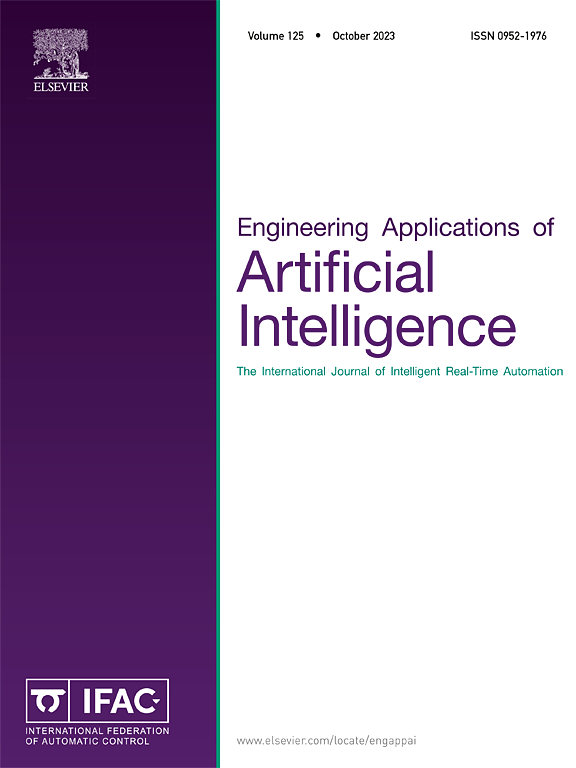A survey on machine learning methods for food safety risk assessment: Approaches, challenges, and future outlook
IF 7.5
2区 计算机科学
Q1 AUTOMATION & CONTROL SYSTEMS
Engineering Applications of Artificial Intelligence
Pub Date : 2025-04-30
DOI:10.1016/j.engappai.2025.110960
引用次数: 0
Abstract
Food safety is essential for protecting health and supply chain management. Food engineering plays a foundational role in ensuring food safety by developing innovative processes and technologies for quality control, contamination monitoring, and risk mitigation. Risk assessment is an effective means to ensure food safety, while machine learning (ML) is crucial in facilitating this process. It improves the accuracy of food quality inspection and the speed of risk assessments through rapid learning and processing of data. This survey provides a comprehensive analysis of commonly used supervised and unsupervised learning methods for food safety risk assessment, highlighting advancements, challenges, and future directions. Supervised learning methods, such as Bayesian network (BN), support vector machine (SVM), artificial neural network (ANN), etc., are successfully applied in prediction of food safety risks and improves the prediction accuracy and efficiency. Unsupervised learning methods, such as k-means, hierarchical cluster analysis (HCA), autoencoder (AE), etc., perform well for unlabeled or high-dimensional food anomaly data. The review also addresses key challenges in the food field, such as class imbalance, the emergence of new and unexpected risks, and the integration of multi-source heterogeneous data, including regulatory data, e-commerce sentiment, and public opinion. The utilization of large language models (LLMs), few-shot learning (FSL), and knowledge graphs together offers promising solutions to key challenges in food safety risk assessment. This comprehensive survey emphasizes the transformative potential of ML in enhancing the field of food safety risk assessment and management.
食品安全风险评估的机器学习方法:方法、挑战和未来展望
食品安全对保护健康和供应链管理至关重要。食品工程通过开发质量控制、污染监测和风险降低的创新过程和技术,在确保食品安全方面发挥着基础作用。风险评估是确保食品安全的有效手段,而机器学习(ML)在促进这一过程中至关重要。通过对数据的快速学习和处理,提高了食品质量检验的准确性和风险评估的速度。本调查对食品安全风险评估中常用的监督学习和无监督学习方法进行了全面分析,突出了其进展、挑战和未来发展方向。贝叶斯网络(BN)、支持向量机(SVM)、人工神经网络(ANN)等监督学习方法成功应用于食品安全风险预测,提高了预测精度和效率。无监督学习方法,如k-means、层次聚类分析(HCA)、自动编码器(AE)等,对于未标记或高维食物异常数据表现良好。该审查还解决了食品领域的关键挑战,例如阶级失衡,新的和意想不到的风险的出现,以及多源异构数据的整合,包括监管数据,电子商务情绪和公众舆论。利用大语言模型(llm)、少次学习(FSL)和知识图谱,为食品安全风险评估中的关键挑战提供了有希望的解决方案。这项全面的调查强调了机器学习在加强食品安全风险评估和管理领域的变革潜力。
本文章由计算机程序翻译,如有差异,请以英文原文为准。
求助全文
约1分钟内获得全文
求助全文
来源期刊

Engineering Applications of Artificial Intelligence
工程技术-工程:电子与电气
CiteScore
9.60
自引率
10.00%
发文量
505
审稿时长
68 days
期刊介绍:
Artificial Intelligence (AI) is pivotal in driving the fourth industrial revolution, witnessing remarkable advancements across various machine learning methodologies. AI techniques have become indispensable tools for practicing engineers, enabling them to tackle previously insurmountable challenges. Engineering Applications of Artificial Intelligence serves as a global platform for the swift dissemination of research elucidating the practical application of AI methods across all engineering disciplines. Submitted papers are expected to present novel aspects of AI utilized in real-world engineering applications, validated using publicly available datasets to ensure the replicability of research outcomes. Join us in exploring the transformative potential of AI in engineering.
 求助内容:
求助内容: 应助结果提醒方式:
应助结果提醒方式:


